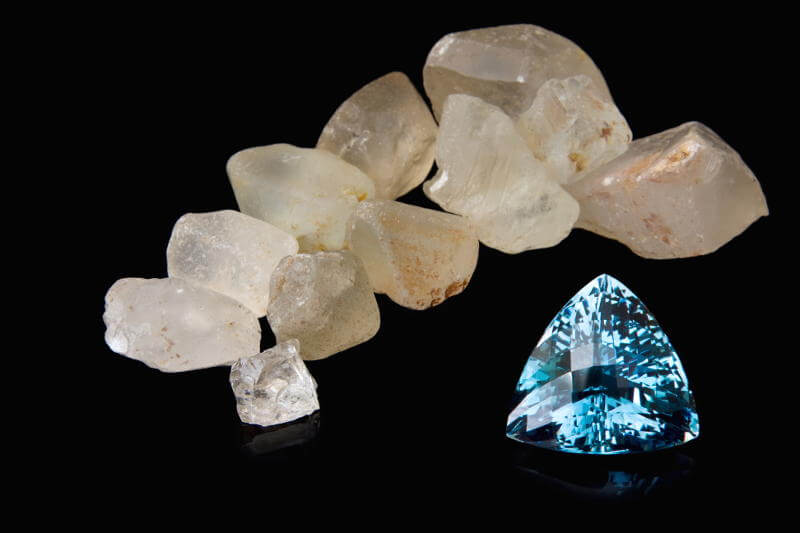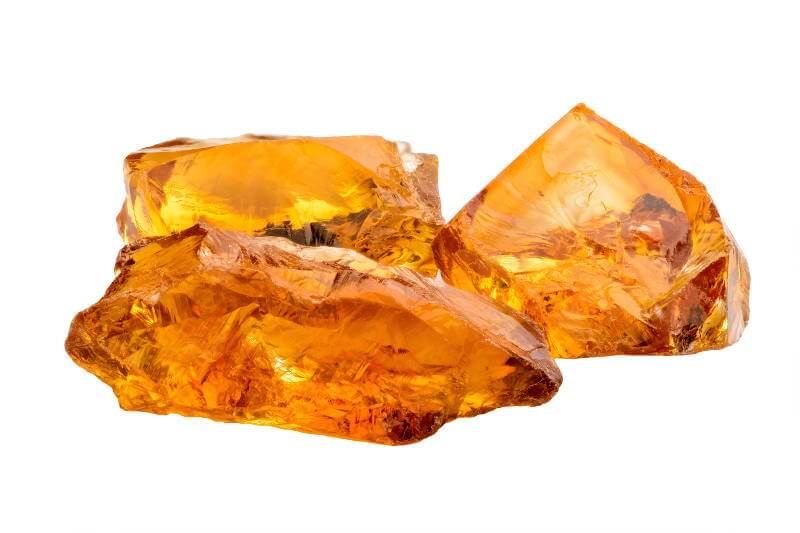November Birthstone
Guide to Topaz and Citrine - November's Birthstones
- Home /
- Birthstones by Month /
- November Birthstone
What is The Birthstone of November?
The wintery month of November is one of the few that have more than one exclusive birthstone, but rather two; Topaz and Citrine. The first has a wide range of gorgeous colors to choose from, while the other shines in hues of yellow and orange. Be that as it may, no matter the color that flatters you most, with the topaz and citrine you’re in good hands; both stones are known to bestow warmth, luck and positive energies on their wearers. Furthermore, these stones can be found in abundance - so there’s nothing stopping you from covering in glittery November birthstones from head to toe!
Celebrities Born in November
| Date | Names |
|---|---|
| November 1 | Lyle Lovett, Jenny McCarthy, Penn Badgley |
| November 2 | David Schwimmer, K.D Lang |
| November 3 | Kendall Jenner, Roseanne, Dolph Lundgren |
| November 4 | Matthew McConagughey, Sean "Diddy" Combs |
| November 5 | Art Garfunkel, Bryan Adams, Kris Jenner |
| November 6 | Emma Stone, Rebecca Romijn, Ethan Hawke, Sally Field |
| November 7 | Lorde, Adam DeVine |
| November 8 | Tara Reid, Courtney Thorne-Smith |
| November 9 | Lou Ferrigno |
| November 10 | Ellen Pompeo, Tracy Morgan |
| November 11 | Leonardo DiCaprio, Demi Moore |
| November 12 | Ryan Gosling, Anne Hathaway, Neil Young |
| November 13 | Whoopi Goldberg, Gerard Butler, Jimmy Kimmel, Steve Zahn |
| November 14 | Josh Duhamel |
| November 15 | Shailene Woodley, Beverly D'Angelo |
| November 16 | Maggie Gyllenhaal |
| November 17 | Martin Scorsese, Rachel McAdams, RuPaul, Danny DeVito |
| November 18 | Owen Wilson |
| November 19 | Jodie Foster, Meg Ryan, Larry King |
| November 20 | Ming-Na Wen, Sean Young |
| November 21 | Goldie Hawn, Bjork |
| November 22 | Scarlett Johansson |
| November 23 | Miley Cyrus |
| November 24 | Katherine Heigl |
| November 25 | Christina Applegate |
| November 26 | Tina Turner |
| November 27 | Bill Nye, Kathryn Bigelow |
| November 28 | Ed Harris, Mary Elizabeth Winstead |
| November 29 | Anna Faris |
| November 30 | Ridley Scott, Ben Stiller, Billy Idol |
The Story of Topazes
The topaz is one of those ancient gems that have been around for many centuries. Be that the case, the origin or first appearance of the topaz in history, remains to be uncertain. The color of the topaz changes according to its state, however, its natural shade tends to be brown or yellow, which is why it is often mistaken to be its fellow November birthstone, the citrine. Different impurities and variations in its process of creation can render the topaz a deep shade of red, gray, orange and in very rare cases, even pink.

Topaz - November Birthstone - Rough and Polished
Despite the confusion with the citrine, the topaz has a very distinct translucent quality - which is perhaps the reason it had fascinated many generations. The name of the stone derives from the ancient Greek word Τοπάζιος which was the ancient name for the small island of Zabargad, located in the Red Sea. The island was believed to have mystical powers, especially due to the yellow stones found on it in abundance. Some scholars, though, believe that the name of the gem originates in the Sanskrit word tapas, which translates to “fire”. Whether from the east or the west, it is undeniable that the topaz played a crucial part in both cultures, as well as in many others.
Since the ancient Greeks and Romans believed the stone gave them strength, and in Egyptian culture the stone symbolized Ra - the God of Sun, the belief that the stone granted power, carried well into the middle ages. People then thought that the stone had the ability to break spells and pacify anger. The stone was considered rare for many centuries, however, in the 19th century, deposits of the stone were found in many locations, Brazil being the first. That being said, the stone is still prized for its beauty and represents affection, warmth and intelligence.
Myths and Legends
The topaz has had great symbolic significance throughout history. In ancient Hindu mythology the gem denoted heat, and was one of the most sacred stones. In fact, the Hindus believed that the topaz should be worn as a lucky pendant, one that would enhance sharpness, intelligence and one’s ‘inner fire’. The topaz represented fire in other cultures too; for instance, in African shamanic rituals, the stone was part of a set of five elements. The wearer of the set was believed to have good fortune - the topaz specifically enhanced one’s sense of kindness and goodwill.
Legend also has it that even if the gem is revealed to someone, whether in a dream or an epiphany, it points at future prosperity. Some even claim that it may indicate a new love affair is just around the corner - good fortune, indeed.
The Story of Citrines

Citrine - November Birthstone
The citrine also has an impressive and long-standing history, however, one which dates back to the ancient Romans rather than Greeks. The citrine belongs to a rich family of gems also known as quartzes. These are hard minerals comprised of silicon and oxygen - the varying ratios between them, as well as their process of formation, influences the shade of the quartz. There are several types, of course, but the yellow variation is the citrine. Its name derives from Latin citrina, which literally translates to yellow.
But, as many cultures and religions have detected, this is a unique kind of yellow - one that glistens brighter than other gems. The Egyptians would carve them into pendants and believed that similarly to the topaz, the stone was associated with the God of Sun. Centuries later, the gem traveled to Northern Europe and was used to adorn Sottish and Irish weapons, believed to provide them with vigor and strength. Thus, it also became a tribute men had given their spouses after a battle.
Finally, it was the Art Deco movement which had revived the stone and gave it an added value. Once the citrines appeared on every ornament and jewel, they quickly became a desirable gem - mostly favored by Hollywood starlets. This established the stone’s rare status, though in recent years the stone is more commonly found and is thus much more affordable. The delicate citrine had a powerful impact yet is extremely gentle - carefully balancing the yin and yang of fire; warmth and passion.
Myths and Legends
Some of the mystical air surrounding the stone has to do with the fact that for centuries, healers believed the citrine could assist in recovering and boosting physical health. It was commonly ground and mixed in different medicine and elixirs that presumably revived and invigorated the physical self. It wasn’t before people were rumoured to have been poisoned by the toxins released from these concoctions that this practice was stopped. Still, its reputation as a source of light and power remains well-established to this day.
Yellow, brown and even orange hues, are the most prominent colors of Novembers’ stones - resembling the miraculous celebration of fall shades, renewal, revival and regrowth. What could be more appropriate for embracing such autumnal festivities.
